|
Rosalía Triana was born on Friday the 13th, in December, 1946 in Parma, Ohio. She left the Midwest in the ‘70s heading anywhere else with her friend, Julia, in a VW bus named Shirley.
She eventually landed in Cerrillos, New Mexico. It was here, with a like-minded group of people where she built a pit house. She treasured this time on what is known as, “The Land.” During these days, she taught theater at Santa Fe Alternative School, where she met her son, Martin. The early ‘80s called her to New York City. It was the height of the punk rock/new wave/experimental theater movement. She was involved with the radical theater group, “La Mama.” It was also in New York that she honed her skill as a master tarot reader and past life regressionist. She appeared in several notable films such as Cotton Club, Moonstruck, and the cult classic, Convoy. She grew tired of the pace, coldness and claustrophobia of the city and returned to her beloved Northern New Mexico in the early ‘90s. Upon her return, she decided to pursue her master’s degree in Chicano/Chicana theater. At the time she was living in El Valle, near Peñasco, and she commuted to UNM in Albuquerque three times a week. She succeeded; she was like that. Shortly after, she became Theater Director at Northern New Mexico Community College between 2001 and 2013. It was here that she realized she was finally “home.“ Rosalía brought the theater up to modern standards and helped to create a community of incomparable artists: musicians, theater people, painters, photographers, sculptors—offering a safe place for people to express themselves to the fullest. Rosalía had a long history of creating and supporting performing arts in New Mexico. If you were involved in any of these organizations, you know the dedication she had: Moving Arts Espanola, LiveArts Santa Fe (board member), Mel Patch Artspace, TAC Club, Teatro Paraguas, SAG, Española Main Street Theater (co-founder), Northern New Mexico Community College, and New Mexico Filmmakers Intensive where her screenplay, “Epi’s Dilemma” was one of the few chosen to be produced. You can watch it on YouTube. Rosalía recognized the transitional power of her craft and found the celebration of community, transformation and healing in every project. She encouraged people to take the first step in understanding their story. If you knew her, you have a Rosalía story of your own. Rosalía is survived by her son, Martin Barela (Bernice), and grandson, Travis Barela; siblings Mary Traina, Elizabeth Leary, Terry Safranek (Kenneth), Patty Traina, Michael Traina (Deborah), and Steve Traina; and longtime co-conspirator, Robert Tomlinson, as well as several nieces, nephews, and five million members of her extended family she created wherever she went. The family would like to extend thanks to Marta Uribe, Carolina Jaramillo-Salazar at Scott’s House, and a special thanks to Melissa J White. A Celebration of Life Event will be held Saturday, January 13, 2024, from 4 to 6 pm at Moving Arts Española. The public is invited. Please RSVP to [email protected]. A party in Rosalía’s honor will happen in the spring. The family requested that in lieu of flowers, you may make a donation in Rosalía’s name to Scott’s House Community Hospice and Respite, or Moving Arts Española, or any other organization that you think is doing work to better the human condition. “Dime con quién andas, y te diré quién eres.” “Tell me who you walk with and I will tell you who you are.” --Spanish proverb
4 Comments
By Jessica Rath An article in the New York Times several months ago caught my attention: it talked about extended drought in Spain and a return to almost-forgotten farming methods to mitigate it. Yes, Spanish farmers rediscovered their acequias, the wide network of irrigation canals which had been introduced by the Moors; Muslims who crossed the Straights of Gibraltar from North Africa in the 8th century and settled in the Iberian Peninsula. The name acequia actually derives from the Arabic word al-sāqiya, meaning one that gives water = irrigation ditch. Having lived in New Mexico for over 20 years, acequias were a familiar sight, of course. I saw them at work in Abiquiú, and in Coyote after I moved there, but the article made me realize that I didn’t really know much about the system, how it works, who manages it, and why it could be useful in a drought. I decided to do some research and asked Tim Seaman, Abiquiú resident and Vice-President of the Rio de Chama Acequia Association, for an interview. Tim grew up in the Eastern part of the United States and moved to Albuquerque in 1972 in order to attend the University of New Mexico Anthropology Department. He received his Master's Degree and worked as an archaeologist for the Museum of New Mexico, and as a systems analyst for the State’s archaeological database. When he retired, he chose to settle in Abiquiú which was the site of his first archaeological project. He and his wife found a piece of property right on the river which had to be irrigated. That was his introduction to the culture. Soon he became a commissioner for the ditch and took on the treasurer’s job. He also does a lot of planning for construction projects on this ditch. “Our ditch is a little bit different than a lot of them”, Tim told me. “Our diversion is located on US Forest Service lands, on the Lovato Land Grant, and the Forest Service got control of this property in the 1950s. Our ditch was established in 1735 which means that we predated the Forest Service for a long time. We had fights with them over easements, construction and environmental issues, because they're part of the federal government and they can do that. So that was my introduction to the nuts and bolts of acequias, an orchard with about 100 apple and pear trees. I grow mostly heritage varieties that you can't buy in the store anymore. I have a hobby of making hard cider: I drink as much as I can, and give away the rest!” I know this drink from France where it’s called cidre. It is absolutely delicious. But wait a minute – Tim’s ditch dates back to 1735? How can he know that – are there any records, I asked him? “Yes, there are records”, Tim replied. “When the Americans came to New Mexico, they changed things so that water is a commodity and that in terms of management the date has priority. So those who have it first have the highest priority. In our system on the Rio Chama, the highest priority goes to Ohkay Owingeh, the Pueblo near Espanola. It used to be called San Juan. It was Juan de Oñate who started the acequia down there in 1598, although it existed before him.” This was new to me; I had always assumed that acequias arrived in the Southwest with the Spanish. That’s a misconception, Tim corrects. “The Native Americans certainly knew all about irrigation. There were three acequias here that the Spanish developed and they have a priority date of 1600. Although the Native Americans have been here since time immemorial, but that's the priority.” But the method of the social organization, the management that operates the acequias – that comes from Europe and the Moors, Tim continued. And again I learned something new: this isn’t only about irrigation, about supplying enough water for crops or animal husbandry. The system, or network, of acequias requires cooperation and coordination between communities and individuals. It requires diplomacy and compromise. People have to work with one another and get along. What a great learning tool for a society which tends toward being self-centered. Tim explained: “If you want to see acequia canals, water irrigation canals that are contemporary with what was going on up here, go down to southern Arizona. The Hohokam [one of the four major cultures of the American Southwest] had canals that were as wide as the current canals that come from the Colorado River. They were highly developed. So, this already existed here, but we call them acequias because of the Spanish colonization of virtually everywhere in the New World.” “The State represented us through some other programs, and we all came up with a solution that was unique in the history of settlements in the last 50 years in New Mexico and it’s all based on water sharing. That was a great accomplishment. We had help from the statewide organization of the New Mexico Acequia Association.” Every November a Congreso is held for all the acequias in the state. At the most recent one there were over 500 people. If you’re at all interested in acequias and how they’re managed, Tim highly recommends that you attend. “Every region has an acequia association and they all have different sizes, from major ones like the Rio Grande, to little tributaries. So the regions tie them together, and each region sends a number of delegates to the Congreso. We vote on things, for example we voted on a couple of resolutions this year that were really important. It had to do with the state government and federal government and how they manage water, and water rights, especially with the state engineer. We celebrated the 10th anniversary of an act that was pushed through the legislature in 2003. It provided for acequias to have a say in water transfers. Prior to 2003, the state engineer made the decision. And it was based upon the concept that water flows towards money, sometimes uphill! So finally, after 10 years, we control our own destiny now. And that's because of the interface between our congressional delegates and our state representatives, it's a very valuable byproduct. “ The Rio Chama Acequia Association was incorporated in 1993, to deal with Native American water claims. They went to court and there was some litigation started, but it stalled for almost 20 years. But recently the RCAA was able to get money from the state, and we were able to hire lawyers as well as some historic researchers to refine the priority dates. The state assigned dates in the 1800s, but the historians provided evidence to the courts that the acequias were established between 1600 and 1735. “I was voted in as vice president of the Rio Chama Acequia Association, and eventually had to take on the presidency”, Tim continued. “Our organization tried to tie together all of the 19 or 20 acequias in this stretch of the river, and that's like herding cats! Everybody is very independent, you know, and they're very aware of the differences in their priority date. With the water shortages that we're experiencing now, those guys down there with the senior ditches were able to just say, well, everybody else has to shut off upstream, so that we get ours. That’s because of priority management. We negotiated for about five to ten years with the Pueblo, and we suggested the use of a water sharing technique that is native to acequias and comes from the Old World. It’s the concept of the separation of the waters. And just recently, last year, we came to an agreement with the Pueblo so that everybody got something out of it. The federal government has a hand in it because they're the authority for the Native Americans, because they have a government-to-government relationship.” I had just read an article about big corporations usurping the water rights in some states, Montana and Nevada for example, so that there was nothing left for the small farmers. Is anything like that going on in New Mexico, I asked Tim. “No, it's very different because of the culture here”, he reassured me. “We have had these systems for so long that in spite of all of the companies that are coming in, that want to build homes in Santa Fe and Albuquerque, they just do it without considering where the water comes from. But they don’t get away with it because of our associations and because of the long-established system of water-rights”. There was something else I was curious about: what are the duties of a Mayordomo? What is the Mayordomo responsible for? “Traditionally, the mayordomo is elected”, Tim explained. “But he doesn't have to be. There's a lot of variation on our ditch for example, because of the difficulty working with the federal government. About three miles of the ditch are on US Forest Service land, and that's the biggest maintenance issue we have. It has influenced the way our ditches run. There's not a common “clean the ditch" effort on our ditch; instead, the Commission hires people to clean it in the spring. And we haven't had to hire someone from outside. In fact, our bylaws say that it's supposed to be someone from the ditch, who is the Mayordomo. Our president, our chair also serves as our Mayordomo. Nobody gets paid for anything here. Well, the Mayordomo can get paid, but the commissioners cannot. The way we do it here is that individuals, of course, take care of their own sections of the ditch. Then the commission takes care of all the infrastructure leading from the diversion all the way down to the first property. So we've been busy putting that part of our ditch into a pipeline – it's all in the public domain up there, and we don't want people walking around our land up there and getting in the ditch.” I had witnessed in Coyote that the people were almost required to clean up and to maintain their part of the ditch. “Sure, they are. Once it gets down into the private land here in everybody's holdings, that kind of takes care of itself! Unless you're the last person on the ditch, people downstream of you are going to complain if your head gate isn't working or if it's leaking water.” “So that's one of the things that holds the community together. On the acequia level, you have a responsibility to your neighbors. And when we get hit with a water shortage, the state will reduce our diversion level. When there's not enough water, native water, in our river, it gets cut down to sometimes 50%. We'll be on a rotation schedule of maybe two days, three days a week, and so everybody shares in that pain. And that makes efficiency really important. So everybody works to make the thing work.”
This is something I didn’t know and never thought about: the acequias provide a fantastic community-building concept. “Yes! Even if you don't have the traditional annual cleaning of the ditch where everybody shows up or has to send somebody or comes with a shovel – even without that, there's still the fact that what you do affects the people below you. And the people above you, affect you. So everyone has to know each other and work together.” To work together and to be aware of those next to you – I’m so impressed to learn that. You can’t take everything for yourself, but you have to leave something for the one downstream. That's such a great concept. Tim agrees. “You know, it's a real lesson for people moving in. Especially people who have money, they think they have this water right, and they try “if you don't supply me with this amount of water…” And they try that for a while, but then they learn that it doesn't get them anywhere.” I knew about acequias making farming in arid, dry regions possible. But I had no idea about the social aspect, the fact that the way acequias work requires that people work together, that they overcome their differences and find a common ground. It is such a valuable lesson nowadays, and I thank Tim Seaman for offering a deeper perspective and a new insight. |
Submit your ideas for local feature articles
Profiles Gardening Recipes Observations Birding Essays Hiking AuthorsYou! Archives
September 2025
Categories
All
|
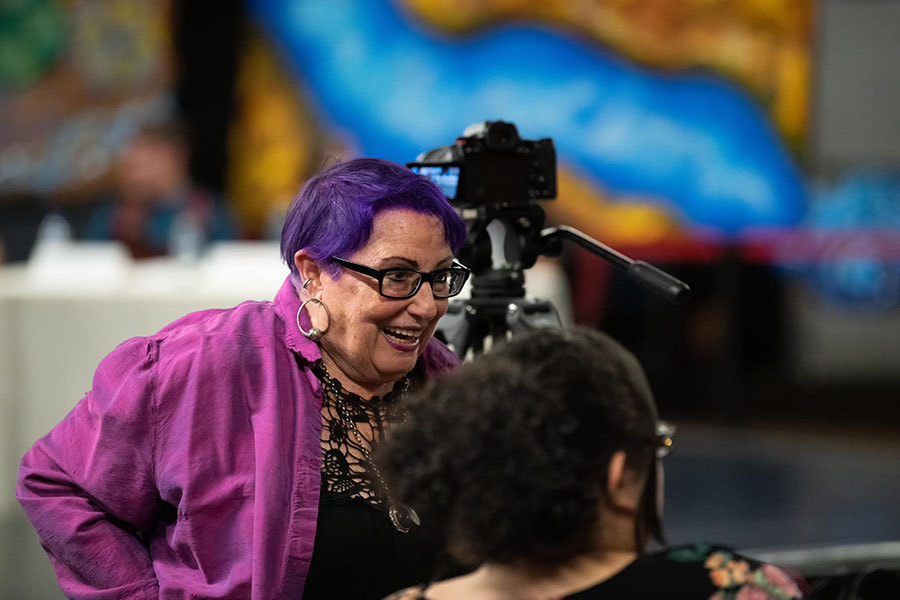
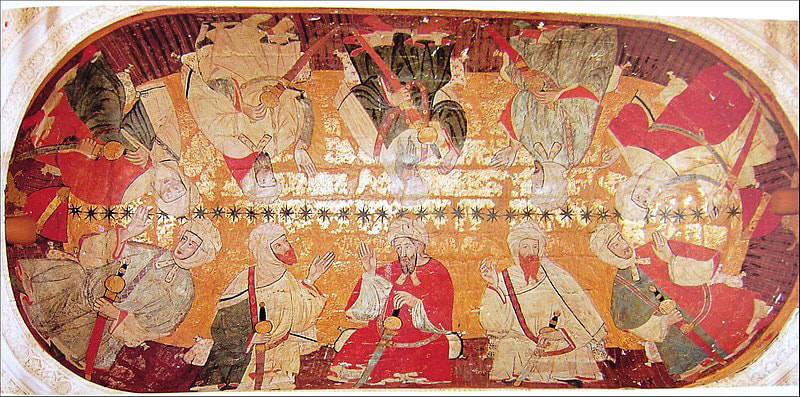
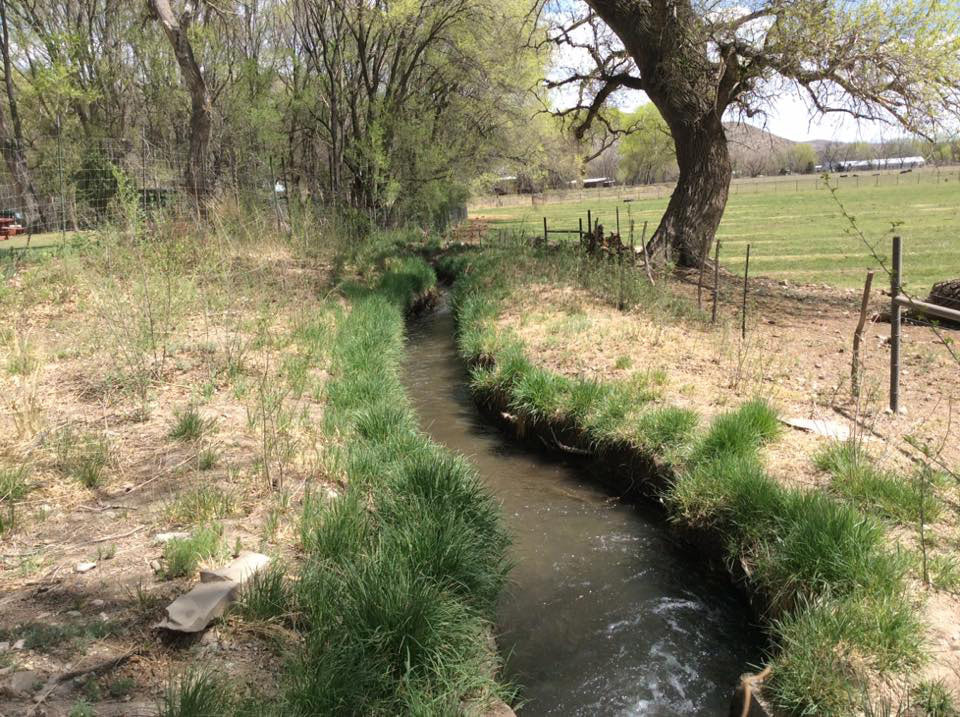
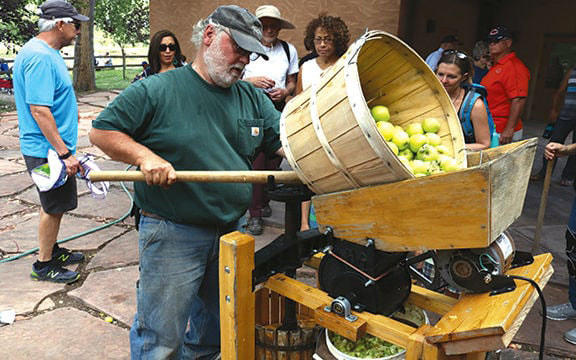

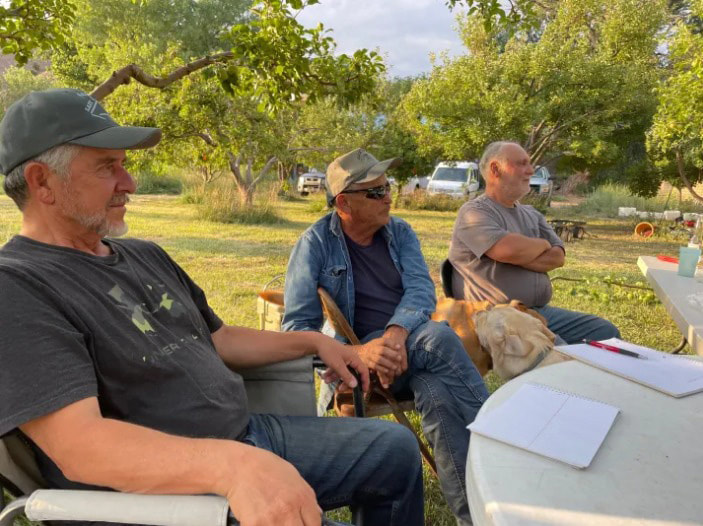
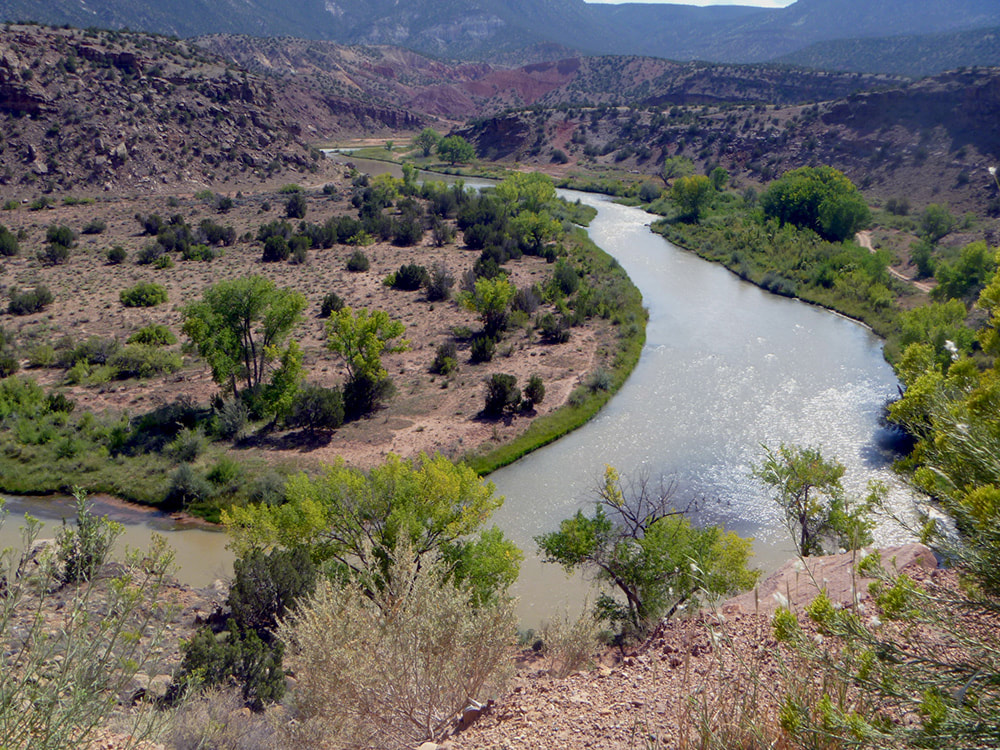
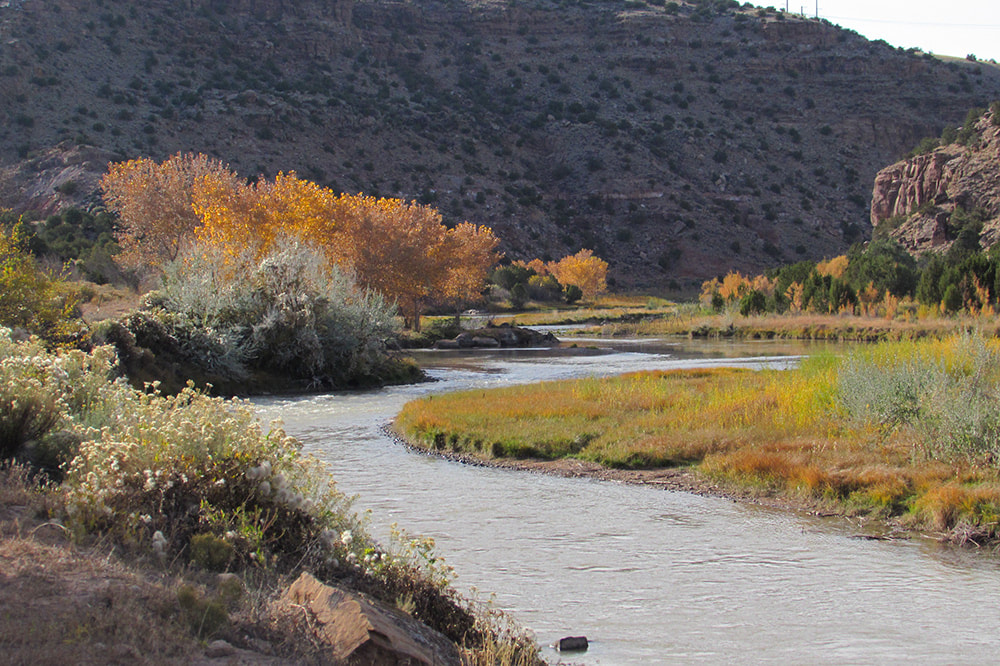
 RSS Feed
RSS Feed